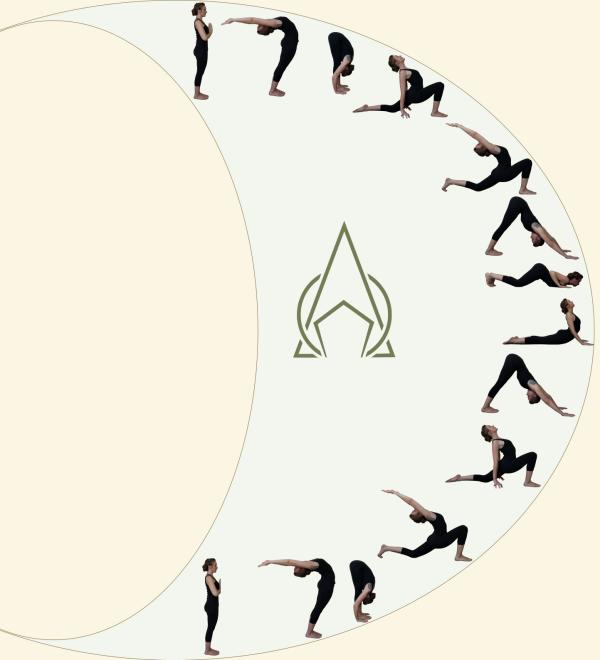
Download full size Chandra Namaskar PDF Version
Before talking about moon salutations I must first mention Sun Salutations because people tend to be more familiar with them as a starting point.
Most people who have been to a yoga class are familiar with sun salutations (surya namaskar), these sequences were traditionally practiced toward the rising sun, but are now done more as a general way to warm up the body. The idea was that you would use these strong movements to increase heat and start to embody the qualities of the sun (light, energetic, fiery, masculine, yang). There are many different variations of sun salutations, but what about moon salutations?
Moon salutations are not used as commonly, but the same principle applies, although here, instead of trying to increase the fire you are trying to bring forward the qualities of the moon (calm, reflective, intuitive, cool, feminine, yin). It’s not necessarily the specific movements that make the sequence work in this way, (although the added back bending helps) it is the intention with which you practice.
The way that you decide to practice and your intention with any sequence will significantly change the effect it has on you. This is the significance of the word namaskar or salutation. You are consciously choosing to embrace certain attributes to bring balance within yourself. So when you try this sequence try to find those qualities associated with the “moon” within yourself, and bring those forward with each movement.
So why does this intention matter, and why might it be helpful to practice in a more ‘moon’ centered way? In yogic philosophy we are constantly trying to balance opposites, to find our way to the center. This is similar to the principles of yin and yang, but in yoga, it is called ha-tha. We all have the attributes of both sun, masculine, heat and force, and moon feminine, cool, and reflection. We must balance each part within us to be whole.
Leaning too much into the masculine or too much into the feminine creates imbalances in the body and mind. This should not be confused with being a man or being a woman, these energies are at play within everyone and each person needs to find a balance within.
So when you practice the moon sequence, try to soften and surrender the body using minimal force. Flow into each movement trying to ride the breath. Allowing surrender, calmness, and reflection within yourself to be brought forward. Avoid using excessive strength or intensity, and instead, pay attention to subtle movements. Notice how your energy and mood change depending on your intention in the practice.
The sequence of asanas is the same as Surya Namaskar except that Ardha Chandrasana, the half moon pose is performed after Ashwa Sanchalanasana. Whereas the twelve positions of Suya Namaskar relate to the 12 zodiac or solar phases of the year, the fourteen positions of Chandra Namaskar relate to the fourteen lunar phases.
1. PRANAMASANA
Keep the eyes closed. Stand upright with the feet together. Bring the palms to meet in the center of your chest. Relax the whole body
Modify:
If you have lower back problems, or if your knees/thighs are rubbing together bring your feel parallel hip width apart.
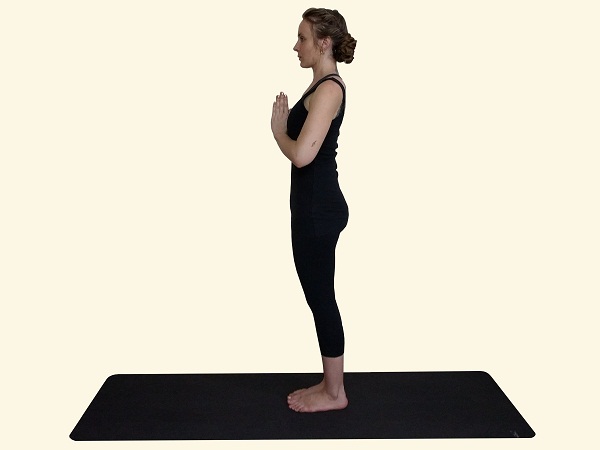
2. Inhale – HASTA UTTANASANA
Bring the hands shoulder width apart, bring them up over the head, and reaching back. You should bend the back slightly
Modify:
Hand straight up instead of back
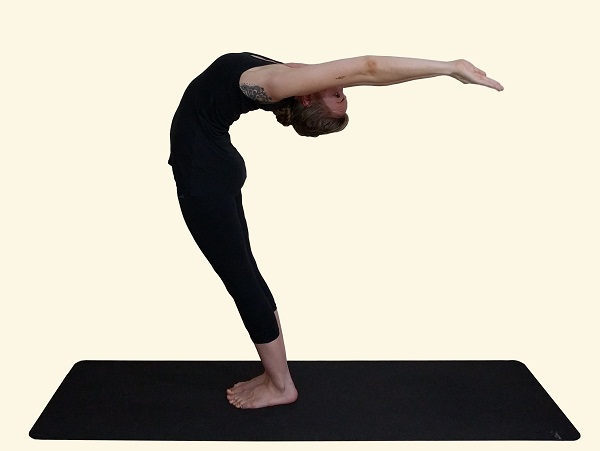
3. Exhale – UTANASANA
Bend forwards from the hips until the finger or palms of the hands touch the floor on either side of the feet. Do not strain
Modify:
If you have slipped disc or lower back problems keep the knees bent so that the palms come to the floor.
Bring the hands onto the shins/ankle until you have enough flexibility to reach the floor
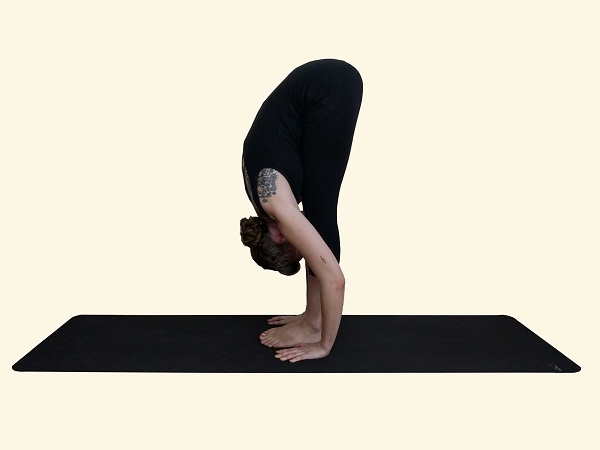
Modify:
bring the back knee onto the floor
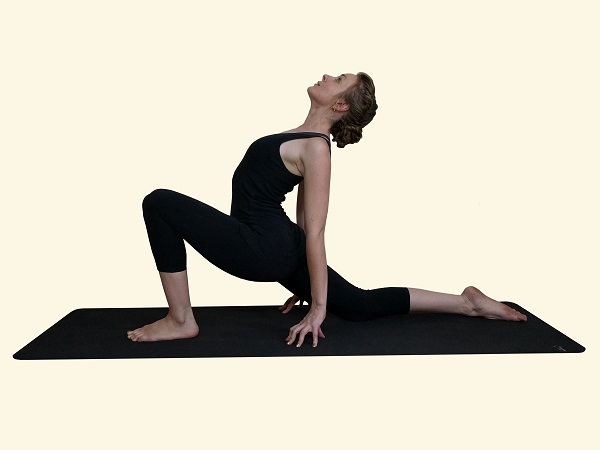
5. Inhale – Ardha Chandrasana
Raise the hands, and stretch both arms over the head keeping them shoulder-width apart. Arch the back and look up, raising the chin.
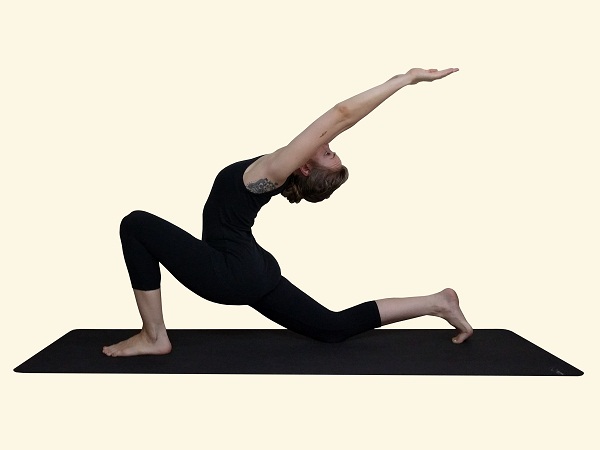
6. Exhale – PARVATASANA/MOUNTAIN POSE
Bring the palms onto the floor and step the left foot back beside the right, while lifting the hips up into the air. Lengthening through the spine, bringing the shoulders towards the ankles. Take a few breaths. (This posture is similar to Downward facing dog, except the feet are together)
Modify:
Keep the knees slightly bent if the posture is too intense.
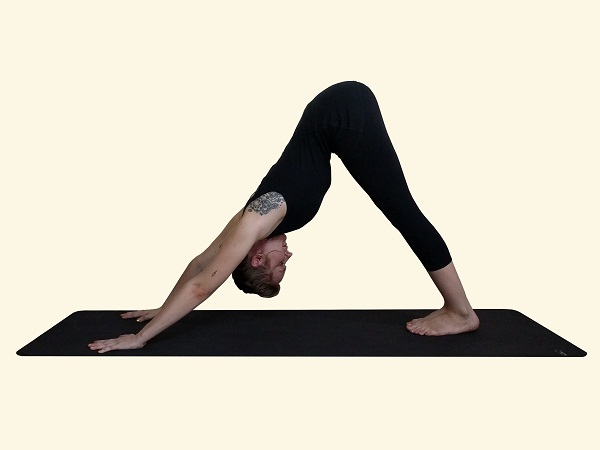
7. On the next Exhale – ASHTANGA NAMASKARA
Coming onto your toes, simultaneously lower the knees, chin, and chest to the floor. The hips and abdomen remain raised.
Modify:
Lower the knees first then the chest and chin
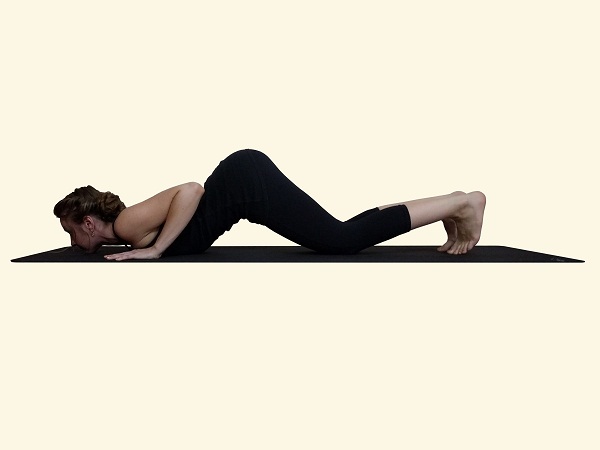
8. Inhale – BHUJANGASANA
Keeping the hands and feet in place, slide the chest forward and raise the chest up. Opening the shoulders (pulling them away from the ears) and tilting the head back to look at the sky. The hips and thigh should be on the floor.
Note:
Keep the buttocks and thighs engaged (squeezed) to prevent problems in the lower back. Unless you are very flexible don’t try to straighten your arms
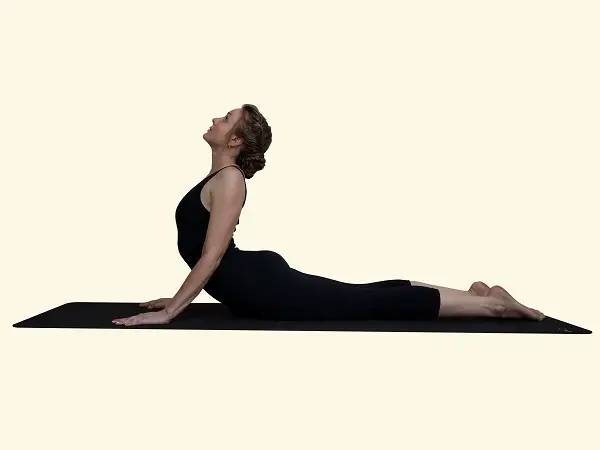
9. Exhale – PARVATASANA/MOUNTAIN POSE
Keeping the hands and feet in the same position lift the hips up, bringing the heels to the ground, lengthening through the spine, and moving the shoulders towards the ankles. Take a few breaths here. As you exhale lifting the hips towards the sky and press the hands into the ground. (Same as step 6)
10. Inhale – ASHWA SANCHALANASANA
Bring the left foot forwards between the hands, and push the pelvis forwards. Lift the torso and tilt the head back, arching the back and looking up to the sky (Same as step 4)
11. Inhale – ARDHA CHANDRASANA
Raise the hands, and stretch both arms over the head keeping them shoulder-width apart. Arch the back and look up, raising the chin. (Same as step 5)
12. Exhale – UTANASANA
Bring the right foot next to the left, and straighten the knees. Bring the crown of the head towards the floor. (Same as step 3)
13. Inhale – HASTA UTANASANA
Keeping the arms shoulder-width apart, raise the torso with the spine as straight as possible. Bring the hands up over the head, and reach back, bending slightly. (Same as step 2)
14. Exhale – PRANAMASANA
Bring the palms together in front of the chest center. (Same as step 1)
Repeat the cycle by reversing the legs in Steps 4,5,10 and 11 (Ashwa Sanchalanasana and Ardha Chandrasana), to stretch the other side. Rest all the Postures will be the same.